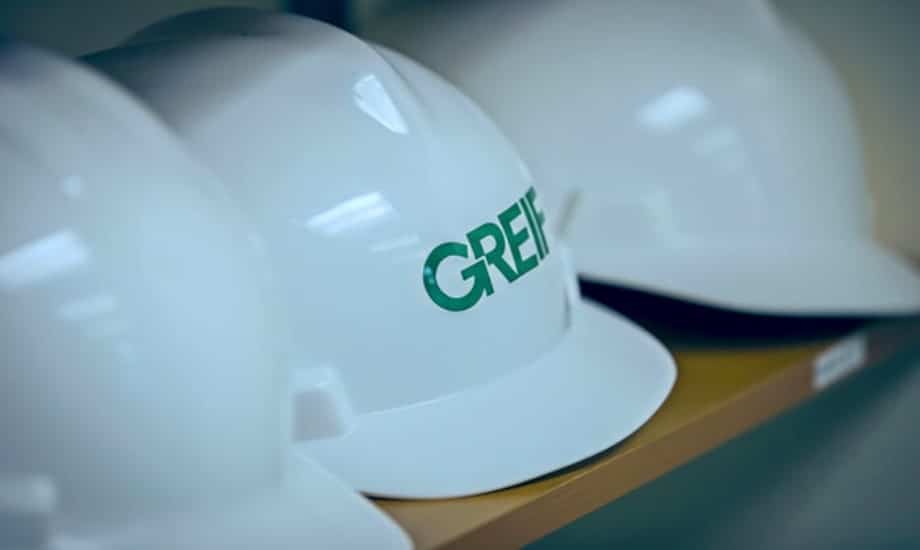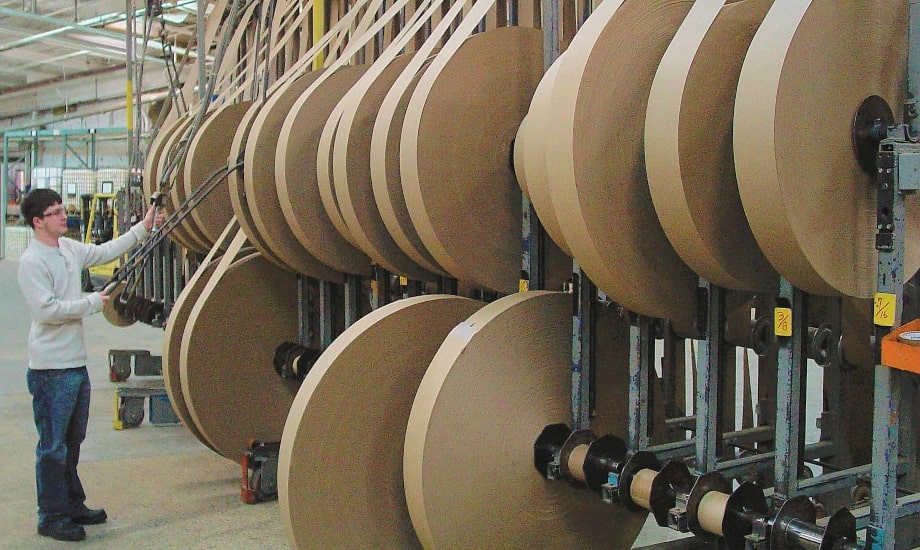Чому вода має значення
Як глобальна виробнича компанія, Greif несе відповідальність за мінімізацію використання води та покращення якості води, особливо на наших найбільш водоємних підприємствах. Відповідальне управління водними ресурсами зменшує наш попит на воду, оскільки її дефіцит і витрати на воду зростають, і гарантує, що вода, що скидається з наших об’єктів, очищена та безпечна для захисту здоров’я громад, у яких ми працюємо. Наші методи управління водними ресурсами одночасно досягають цих цілей, одночасно підвищуючи операційну ефективність і мінімізуючи регуляторний ризик.
Управління
Тільки 1%
загальна кількість спожитої води в регіонах з високим базовим рівень водного тиску
Наші зусилля щодо якості води дозволили нам уже досягти нашої мети щодо скорочення 10% до 2025 року.
Greif відстежує ключові показники ефективності (KPI), щоб забезпечити належне очищення наших стічних вод. У разі виникнення інциденту з лікуванням керівник закладу спостерігатиме за зміною цих KPI, що ініціює розслідування для визначення першопричини та вирішення проблеми. У разі необхідності Greif залучає сторонніх експертів для підтримки наших розслідувань. Наприклад, у 2020 році на млині Greif Tama була висока біохімічна потреба в кисні (БПК) і концентрація азоту. Грайф уклав контракт із третьою стороною для проведення інспекції на місці та надання рекомендацій щодо коригувальних дій. Ґрунтуючись на їхніх рекомендаціях, ми збільшили додавання поживних речовин, запровадили покращене аналітичне тестування для моніторингу рівня поживних речовин і запровадили тестування хімічної потреби в кисні (ХПК), щоб швидше отримувати відгуки про потенційні проблеми.
Незважаючи на те, що вплив Greif на воду здебільшого залежить від наших операцій PPS, ми вживаємо заходів для обмеження використання води на всіх наших підприємствах, особливо в регіонах з нестачею води в Латинській Америці, Африці та на Близькому Сході. У цих приміщеннях і на всіх наших підприємствах ми знижуємо тиск води там, де він вищий, ніж потрібно, замінюємо негерметичні клапани та збираємо й використовуємо дощову воду, коли це можливо. Наше підприємство Global Industrial Packaging в Ер-Ріяді, Саудівська Аравія, вжило багато таких заходів, щоб зменшити та переробити стічні води, що в кінцевому підсумку призвело до 32-відсоткового скорочення кількості відходів на сміттєзвалищі з їхнього підприємства. Перегляньте, будь ласка, наш Відходи для отримання додаткової інформації про їхні досягнення.
У 2021 році ми розробимо стандартні інформаційні панелі даних про навколишнє середовище для наших заводів, щоб краще розуміти та керувати водою та стічними водами, а також даними про енергію, і продовжувати працювати над визначенням можливостей підвищення ефективності використання води.
Цілі та прогрес
У 2017 році компанія Greif оголосила про мету на 2020 рік скоротити на 10 відсотків кілограми біохімічного споживання кисню (БПК) на метричну тонну виробництва порівняно з базовим рівнем 1,47 2014 року на старих заводах Greif. Наш процес суттєвості в 2017 році призвів до створення нових цілей на 2025 рік і повторного визначення нашої цілі BOD як цілі на 2025 рік. Крім того, у 2021 році ми плануємо створити цілі та завдання на 2030 рік відповідно до Американської лісової та паперової асоціації.
У 2018 році ми переоцінили наші історичні дані про використання води та БПК, щоб підтвердити нашу базову лінію та припущення для підтримки постійного вдосконалення, пов’язаного з водою. Завдяки цьому процесу ми перерахували базовий показник БПК за 2014 рік до 1,40.
2025 Ціль: до кінця 2025 фінансового року зменшити БПК, що викидається в кілограмах, на 10 відсотків на метричну тонну комбінованого виробництва на заводах Riverville і Massillon, використовуючи перерахований базовий рівень 2014 року.
Прогрес: З 2017 року ми знизили БПК на метричну тонну виробництва на 71,8 відсотка на наших застарілих фабриках Greif. Наш значний прогрес у досягненні нашої цілі БПК був можливий завдяки встановленню очисних споруд на нашому заводі Massillon. Завершений у липні 2017 року проект призвів до невеликих покращень у 2017 році та значно перевершив очікування у 2018 році. Ці переваги продовжували реалізовуватися у 2020 році.
У 2021 році ми продовжимо відстежувати наш прогрес у зниженні БПК, одночасно контролюючи конкретне використання води на наших млинах, і переглянемо наші цілі, щоб включити як наші застарілі млини Greif, так і млини Caraustar, які зараз є частиною нашої організації. Крім того, у 2021 році ми оголосимо нові цілі скорочення води для наших заводів.
Дані продуктивності
ВОДА*
|
|
2016 фінансовий рік |
2017 фінансовий рік |
2018 фінансовий рік |
2019 фінансовий рік |
2020 фінансовий рік |
|---|---|---|---|---|---|
|
Водозабір (тис. кубометрів)* |
8,420.2 |
9,666.3 |
9,360.8 |
13,864.4 |
12,936.6 |
|
Поверхневі води |
- |
9,242.7 |
8,630.0 |
10,266.8 |
10,132.0 |
|
Грунтові води |
- |
423.6 |
730.7 |
3,597.6 |
2,804.6 |
|
Дощова вода |
- | - | - | - | - |
|
Стічні води |
- | - | - | - | - |
|
Муніципальна вода† |
- | - | - | - | - |
|
Скидання стічних вод (тис. кубічних метрів)** |
7,961.4 |
8,983.2 |
9,316.2 |
12,403.92 |
11,935.1 |
|
Річка Джеймс |
- |
8,788.8 |
8,907.1 |
7,949.5 |
8,375.0 |
|
Місто Масійон |
- |
191.6 |
407.1 |
424.0 |
355.8 |
|
Річка Тускарава |
- |
2.8 |
2.0 |
2.5 |
8.8 |
|
Струмок Світвотер^ |
- |
- |
- |
0.0 |
0.0 |
|
Кобб Каунті WWTP^ |
- |
- |
- |
844.9 |
855.0 |
|
Столичний каналізаційний район Цинциннаті^^ |
- |
- |
- |
37.6 |
40.6 |
|
Столичний каналізаційний район Мілуокі^^ |
- |
- |
- |
349.0 |
335.9 |
|
Санітарний район округу Лос-Анджелес WWTF^^ |
- |
- |
- |
196.8 |
189.1 |
|
Трі Майл Крік^ |
- |
- |
- |
0.0 |
- |
|
Village of Baltimore WWTF** |
- |
- |
- |
0.0 |
6.1 |
|
West Branch Paw Paw Creek** |
- |
- |
- |
697.1 |
581.4 |
|
Регіональна очисна станція Сан-Хосе-Санта-Клара^^ |
- |
- |
- |
288.1 |
334.2 |
|
Центральна очисна станція такоми^^ |
- |
- |
- |
6.9 |
8.5 |
|
Місто Фітчбург WWTP^ |
- |
- |
- |
322.6 |
309.0 |
|
Річка Айова** |
- |
- |
- |
291.8 |
364.9 |
|
Вишневе озеро** |
- |
- |
- |
597.8 |
550.4 |
|
Притока Айови** |
- |
- |
- |
58.0 |
78.6 |
|
Біохімічне споживання кисню (тис. кг) |
1,050.4 |
890.4 |
204.2 |
3,508.3 |
3,457.1 |
|
Загальна кількість завислих твердих речовин (кг) |
546,857 |
465,098 |
349,003 |
1,224,442 |
1,045,928 |
|
Фосфор (кг) |
5,728 |
4,991 |
6,617 | 4,708 | 4,445 |
|
Виробництво (MT) |
665,000 |
690,000 |
713,336 |
1,729,062 |
1,661,228 |
|
Норма витрати (м3/MT) |
12.7 |
14.0 |
13.1 |
8.02 |
7.79 |
Примітки:
- Дані за 2015–2018 роки взято з двох паперових фабрик Грейфа, одна з яких розташована в Рівервіллі, штат Вірджинія, а інша — у Массійоні, штат Огайо. Історично на ці дві паперові фабрики припадало понад 901 TP3T глобального водного сліду Грайфа. Вони черпають воду з річки Джеймс та місцевих колодязів відповідно. Дані за 2019 рік включають 12 колишніх млинів Caraustar, які були придбані та інтегровані в 2019 році. Усі дані за 2019 рік є даними за повний рік. Якість стічних вод, що скидаються з наших млинів, відповідає вимогам дозволу. Жодна скинута вода не використовувалася іншою організацією. WWTP = Станція очищення стічних вод.
- Дані за 2019 фінансовий рік включають станцію очисних станцій Mobile Wright Smith, яка була закрита в 2020 році та перерахована для належного врахування скидів West Branch Paw Paw Creek за 2019 фінансовий рік.
Обробляється первинним освітленням, вторинним освітленням і аерацією перед прямим викидом.
Очищені за допомогою попередньої обробки стічних вод, включаючи видалення розчинної БСК.
Очищаються за допомогою попереднього очищення стічних вод лише твердими речовинами.
† Greif наразі не відстежує забір комунальної води.
|
Використання води в регіонах із високим або надзвичайно високим базовим нестачею води |
2020 фінансовий рік |
|---|---|
|
Забір води (тис. кубометрів) |
170.4 |
|
Відсоток загального водозабору |
1% |
|
Спожита вода (тис. кубічних метрів) |
162.7 |
|
Відсоток загальної кількості спожитої води |
1% |
Поліпшення наших стічних вод
У 2017 році комбінат Greif's Massillon, штат Огайо, завершив будівництво очисних споруд для значного зниження біологічного споживання кисню (БПК) скидної води заводу перед поверненням на муніципальні очисні споруди. Високий рівень БПК сприяє росту бактерій, вивільненню запахів, і його необхідно контролювати за допомогою хімікатів. З моменту встановлення очисної споруди ми зменшили БПК, що скидається в муніципальну систему, більш ніж на 96 відсотків, сприяючи досягненню нашої мети щодо зниження БПК до 2025 року. Це також усунуло кілька хімічних речовин, які раніше були необхідні для боротьби з бактеріями.

Зменшення води на нашому заводі в Балтиморі, штат Огайо
У 2020 році комбінат Грейфа в Балтіморі, штат Огайо, перейшов від прямого скидання очищених стічних вод до місцевого струмка до скидання попередньо очищених стічних вод на місцеві очисні споруди, які використовують найсучаснішу мембранну систему очищення для подальшої обробки води. Ця зміна як зменшила загальний скид води, так і сприяла поверненню більш чистої води в громаду. Протягом кількох років Грайф співпрацював з місцевими та державними органами влади, щоб розробити та затвердити проект, який був затверджений у 2019 році та завершений у жовтні 2020 року. Проект зменшить споживання води на 550 000 м3 на рік. Громада отримує вигоду від чистішої поверхневої води, оскільки завдяки цьому переходу з місцевих струмків також видаляється кілька тонн біологічної потреби в кисні та загальна кількість завислих речовин.

ОСНОВНІ СТАЛІСТЬ
Тільки 1%
Загальна кількість спожитої води в регіонах із високим базовим тиском води
Наші зусилля щодо якості води дозволили нам уже досягти нашої мети щодо скорочення 10% до 2025 року.


